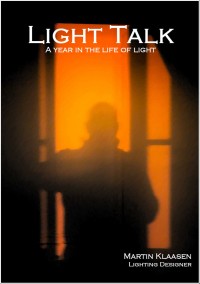The week that was 9-13th May 2016
Singapore, Weekend 14-15 May 2016
A whole week in the office without travelling! What a luxury! It gave me ample time to focus on current projects, my team and re-thinking the office operations in the wake of the departure of my project director. We reflected as a team on how we could improve and starting to look around for a new project director. As I write my blog I believe we have already found “the one”. Time will tell of course but for now he ticks all the boxes and we will work towards confirming him in the coming week. We are all excited and are looking forward to him joining the team. This will probably be the fastest turn around between a resignation and the appointment of a successor that I have experienced in my company. It is already difficult to find good, experienced and suitable people in the first place, let alone on such quick turnaround. We are advertising for the position on several platforms and received many (sometimes desperate looking) applications. People from all walks of life, some not even related to the design or a lighting world, have been applying showing that there are a lot of either unsatisfied or unemployed people around at the moment. I do need to clarify that the applications come from all sorts of backgrounds and countries, many from outside Singapore. Many of them having CV’s not even close to what we listed as requirements of what we are looking for. Ironically we found “our guy” through own research via Linked In. In this case we found him, he did not find us…a good sign? Three times lucky they say, so fingers crossed, we are certainly excited…
Projects.
Is the abundance of people looking for work a sign of slowing economic times; most probably. We do see this reflected in our daily work as well. Projects are slowing down in execution speed, some even put on hold for a while, new projects taking longer time to kick off; some with a reduced scope. There is definitely a slow-down in new projects coming in which we can measure from the reduced requests for design consultancy proposals, but we are still good with most of our on-going projects with several new ones signed just recently. On this subject I do have to mention that we have now been ”kicked out” fully from the other 2 projects that we were doing with the same client. Having been released last week from one of the projects the client decided that it was probably best to push the reset button and sadly announced they had decided to terminate our services from all of our ongoing work with them. It seems to be done in a professional manner, no finger pointing, no criticism, just a commercial business decision to stream line the consultancy services with the other (locally based) consultants. We have been asked to compile an overview of all work completed and to prepare final invoices for all of the completed work as per contractual agreement. As I mentioned last week it is a shame not to be able to complete something you started with much enthusiasm and a little sting into our pride as consultants but business is business and we have to respect client decisions. We have identified our “shortcomings” and have strengthened our resolve and experience for a next time.
Quality
One of the trendy topics of recent has been lighting system quality compliance to TM30 or L90/B10. TM30-15 is the new IES standard method for evaluating colour rendition and will replace the familiar CRI, colour rendering index. Instead of the Ra and Re colour references, the new evaluation method looks at colour fidelity (Rf) and gamut (Rg) index, mostly comparable to hue and saturation. The method uses 99 different colour evaluation samples selected from the world of possible colours and from real objects, fabrics, paints, materials, skin tones measuring the distortion between the reference samples and the measured object, indicating the capability of the lighting system to render colours to the highest possible quality and consistency. The method is a good design tool specifically where colour qualities are critical.
The L/B standard is related to defining criteria to establish a product’s performance compliance to longevity and failure. Some manufacturers are starting to promote their product quality and differentiating themselves from the “cowboys” by referring specifically to their TM30 colour quality compliance (Soora for instance) or L90/B10 quality (Erco, IGuzzini, etc.). The L and B indexes are set against a life time of 50,000 or 30,000 hours and describe the amount of remaining light output (L) and failure rate (B) over time compared to new. Obviously L100 (zero lumen depreciation) is the highest light output that could technically be achieved, but realistically L90 (10% depreciation) over 50,000 hours is considered the highest achievable. Likewise B0 (zero failures) would indicate the ultimate achievable. Reality however dictates a more realistic definition with B10 (10% failure over time) being the highest quality class. So a L90/B10 quality compliance over 50,000 hours is regarded as the highest quality followed by L80/B20, L70 B30, etc. The L index ranges from 70 to 90, the B ranges from 10 to 50 with L70/B50 over 30,000 hours being the lowest quality. Manufacturers that do not indicate their L and B index are considered to be in this lowest quality class.
It is not a much used design selling tool when we specify but something we should embrace and consider each and every time. Specifying a 10,000 lumen fixture of L90/.B10 quality versus L70/B50 means that that in the first case we still have 81% of the original lighting output (considering lumen depreciation and failure) after 50,000 hours, versus the lower quality with potentially only 35% after 30,000 hours (!!!)…that is huge! I know there are different economic considerations to consider such as budget, level of sophistication and project lifespan, but at least we should educate our clients about this quality consideration. To make this picture more complete it would be interesting to get some cost figures attached to it. For instance how much does a L90/B10 fixture cost in comparison to the same one but with a L70/B50 quality label over time. If anyone has some figures to share please do! Certainly some food for thought for this weekend
Have a great weekend.










 The long awaited book compilation of Martin's first year of blogging is available. Order now.
The long awaited book compilation of Martin's first year of blogging is available. Order now. Feedspot Top 100 Lighting Blogs
Feedspot Top 100 Lighting Blogs